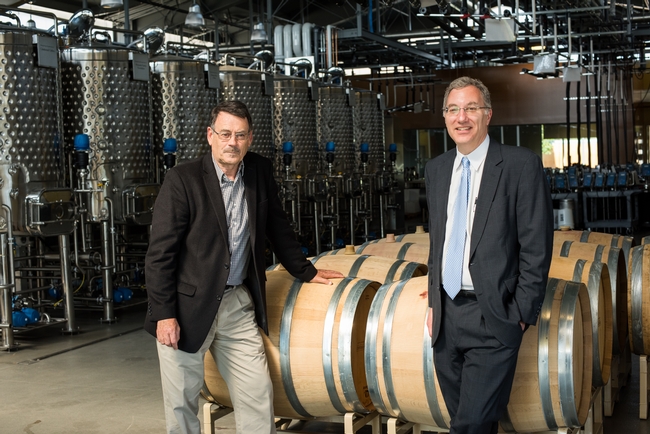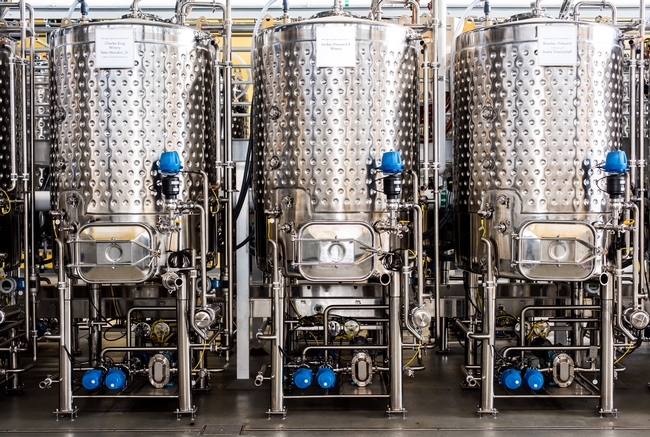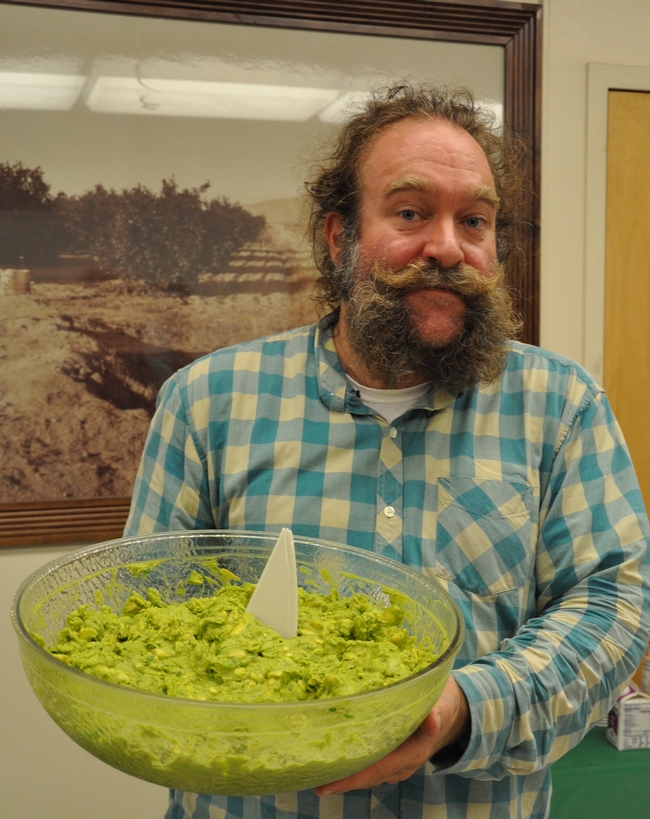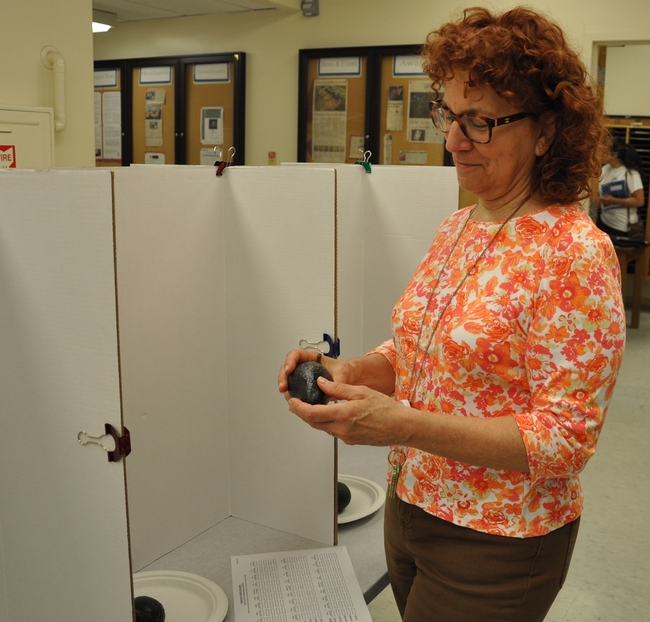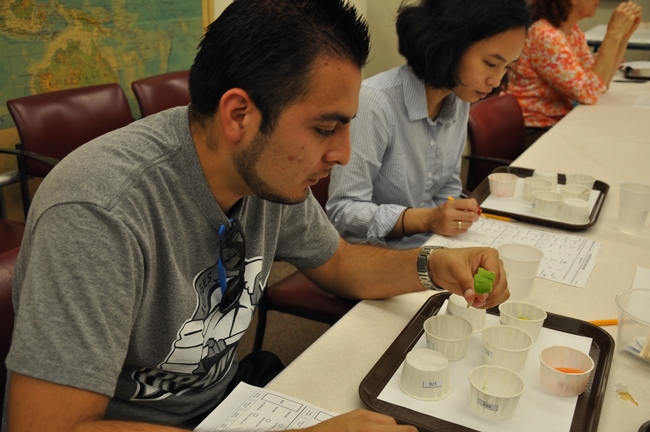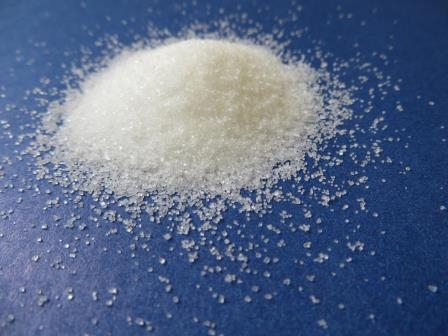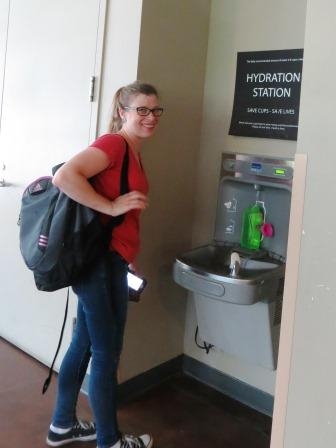UC Food and Agriculture Blogs
Helping winemakers sustainably produce premium wine
Ten large, shiny tanks stand near the Robert Mondavi Institute for Wine and Food Science at UC Davis, holding more than a year of rainwater and the key to processing food and drink during a drought. The water tanks, and the teaching-and-research winery they support, are showing students and winemakers throughout the world how to reduce processing costs, improve wine quality, and protect the planet's dwindling natural resources.
“It's about self-sufficiency,” says Roger Boulton, UC Davis professor of enology and chemical engineering. “We're demonstrating how you can operate a winery, brewery, or any food processing plant with the water that falls and the sun that shines on your roof.”
The work is the latest in more than a century of trail-blazing viticulture and enology science at UC Davis. UC Davis researchers are working with Cooperative Extension specialists and farm advisors with UC Agriculture and Natural Resources to help winemakers and grape growers sustainably produce premium wine.
Water is critical to winemakers in drought-stricken California and beyond. Grapes aren't a very thirsty crop to grow, but keeping fermentors clean is another story.
A typical winery uses four to six gallons of water after the grapes are harvested to produce one gallon of wine, and most of that water is used to wash equipment. Boulton and David Block, chair of the UC Davis Department of Viticulture and Enology, are developing self-cleaning fermentors capable of recycling 90 percent of that water. The goal: affordable technology and alternative practices that use less than one gallon of water to produce one gallon of wine.
Winemakers currently remove sticky, fermented, grape residue from tanks with water and elbow grease. Clean-in-place technology replaces hand-cleaning with an automated system that sprays tanks with diluted solutions of potassium hydroxide and potassium bisulfate.
“The dairy industry has used clean-in-place technology since the 1960s and the pharmaceutical industry since the 1990s,” says Block, a chemical engineer and enologist who helped the pharmaceutical industry manage clean-in-place technology before coming to UC Davis in 2008. “It's a little different with dairy and pharmaceuticals, where poor sanitation can kill you, but the concept is similar.”
So the water tanks near the Robert Mondavi Institute have two functions, to store water captured during the wet season to use during the dry season when it's needed most, and to filter and purify the water as it's used and reused to clean fermentors.
“We will filter and reuse that water at least five times, hopefully one day up to 10 times,” Boulton says. “It's not waste water. It has no phosphates, no nitrates, and no chlorine. Clean-in-place technology represents a huge potential for water and labor savings.”
Industry is starting to notice.
“Clean-in-place technology is very attractive to us,” says Ashley Heisey, director of winemaking at Long Meadow Ranch in Rutherford and a UC Davis viticulture and enology graduate. “Water is such a critical issue. Long Meadow Ranch owners Ted, Chris, and Laddie Hall built our facilities with great concern for the environment, and thanks to UC Davis, we can take it one step further.”
In Sacramento, grocer Darrell Corti from Corti Brothers Market says where UC Davis leads, winemakers will eventually follow.
“What we know about grape-growing and winemaking is primarily due to the work they do at UC Davis,” Corti says.
A longer version of this story is in the magazine Edible Sacramento.
Flies in the Summer
Summer is in full gear and along with warm weather comes the abundance of some seasonal insect pests such as flies. Of the thousands of fly species, only a few are pests in and around the home, the most common one being the house fly. Flies can carry...
Camping soon? Don't move firewood!
As you plan the last few camping trips of the summer, remember: buy firewood when you get to your destination. Don't move firewood! Buy it where you burn it. Why? Simply, we don't want wood-boring pests and diseases to be moved from one area in the...

firewood-logo-220
Have you tasted an avocado lately?
The lab of Mary Lu Arpaia, a Cooperative Extension subtropical horticulturalist with UC Agriculture and Natural Resources (UC ANR) and the Department of Botany and Plant Sciences at UC Riverside, hosts an avocado tasting each month on the UCR campus. Attended typically by about 60 people, the tastings have grown in popularity over the years.
Eric Focht, a staff research associate in the Arpaia lab, helps organize the tastings; the guacamole he prepares specially for the occasion serves as an additional attraction. Focht has been working on avocados since 1999, the year he joined UCR as a staff member. His relationship with the campus, however, began before then; his father, now retired, was a professor on campus.
Typically, participants of the avocado tastings sample six avocados which come from UC ANR's South Coast Research and Extension Center in Irvine. “Hass control fruit are purchased from or donated by a packing house,” Focht says.
First, participants do a visual assessment of the fruit, evaluating texture, size and color. Next they step into a room where they do the blind tastings.
“The data is compiled and used to assess, among other things, which of our new breeding selections shows promise and should be pushed for eventual release,” says Focht, whose duties include coordinating field activities, designing field layouts, generating maps and databases, selecting avocado varieties of interest, interacting with growers and the public, troubleshooting, and directing the day-to-day operations of the lab when Arpaia is away.
Focht's favorite avocado variety varies by year and season.
“Right now our 465518-99 has been performing very well,” he says, “but in former years, its peak season is February through April. In the fall, Reed is always a good fruit with good flavor and texture. I prefer a fruit that peels easily and has good flavor. If it doesn't peel clean from the skin, I tend to overlook it for something else with good flavor and convenient packaging.”
The avocado growing season varies from variety to variety. By planting out several varieties, it is possible to have avocados year round in one's garden. Focht explains that the growing season varies regionally as well.
“The season in San Luis Obispo is months later than it is in San Diego,” he says.
Most avocado acreage in California is currently in Northern San Diego County. Most avocado acreage in the U.S. is in California. Other states with avocado industries include Florida and Texas. Worldwide, avocados are grown in Mexico, Chile, Peru, Israel, Australia, South Africa and New Zealand.
The California drought, now in its fourth year, is a concern for avocado lovers and scholars like Focht.
“An acre of avocado trees typically requires 2.5-4 acre-feet of water per year depending on weather and other factors,” he says. “The drought is resulting in lost acreage as farmers can either not afford or not find enough water for their trees. Successful farmers are having to modify their cultural practices to stay competitive.”
The next avocado tasting at UCR will be Aug. 12, 2015. For more information about the tastings, contact Focht.
The health impacts of sugary drinks
Americans consume nearly three times the recommended amount of sugar every day, and about half the U.S. population consumes sugary drinks on any given day.
Excess sugar consumption contributes to obesity, tooth decay, early menses in girls, and chronic diseases including diabetes and heart disease. To add to the damage, doctors are now attributing too much dietary sugar to non-alcoholic fatty liver disease, which can lead to cirrhosis of the liver.
It's enough to make you sit up and listen to the warnings about too much soda, sugary drinks, and sugar-laden processed foods.
What is a sugary drink? It's any beverage, more or less, with added sugar or other sweeteners, including high-fructose corn syrup. The long list of beverages includes soda, lemonade, fruit punch, powdered fruit drinks, sports drinks, energy drinks, sweetened coffee and tea drinks, and many flavored milk products.
People are becoming aware of the concerns of too many sugary drinks, and steps are being taken to reduce their consumption. Some K-12 school districts across the nation are limiting sales of soda, and the City of Davis will soon require that restaurants offer milk or water as a first beverage choice with kids' meals.
UC Cooperative Extension, the county-based outreach arm of UC Agriculture and Natural Resources, is partnering with health agencies and conducting public service programs for youth and families about sugary drinks. UC ANR Cooperative Extension in San Joaquin County recently presented a "Rethink Your Drink" parent workshop in conjunction with the county's Office of Education, and Solano County Cooperative Extension is working with the California Department of public health to engage youth in "Rethink Your Drink" programs.
Lucia Kaiser, UC ANR Cooperative Extension nutrition specialist, co-authored a policy brief about California's rural immigrants who have poor-quality tap water, or perceive tap water to be bad. Kaiser, who is also a nutrition faculty member at UC Davis, noted that studies have found a link between water quality and consumption of sugary drinks, which is a concern in low-income communities that don't have resources for clean water.
As of this month (July 2015), UC San Francisco is no longer selling sugary beverages on its campus, and UCSF has launched a Healthy Beverage Initiative. UC Berkeley held a Sugar Challenge this year, and UC Davis is conducting a Sugar Beverage Study on women.
Scientists at UC San Francisco, UC Davis, UC ANR's Nutrition Policy Institute, and other universities are studying the health effects of sugar and implementing health outreach programs. And UC's Global Food Initiative is building on the momentum of excessive sugary-drink consumption.
A healthy alternative to sugary drinks? Water, of course. Many universities and public places are replacing traditional drinking fountains with water stations so that students and others can fill their own bottles and have water “on the go.” And UC President Janet Napolitano is working with the Nutrition Policy Institute on a bold and sensible request to place water on the USDA's MyPlate nutrition guidelines.
The next time you're thirsty, drink wisely to your good health.
Additional information:
- Sugary drinks are hiding under a 'health halo'; UC ANR Food Blog, Aug. 6, 2014
- Nutrition Policy Institute, UC ANR
- UCSF Launches Sugar Science Initiative, a national initiative
- Learn the Facts about Sugar: How Sugar Impacts your Health, UCTV Video, May 2015
- The Hidden Costs of Sugar; UCSF news release, Nov. 2014
- Why Sugar? Why Now?, blog article by Laura Schmidt, UCSF



